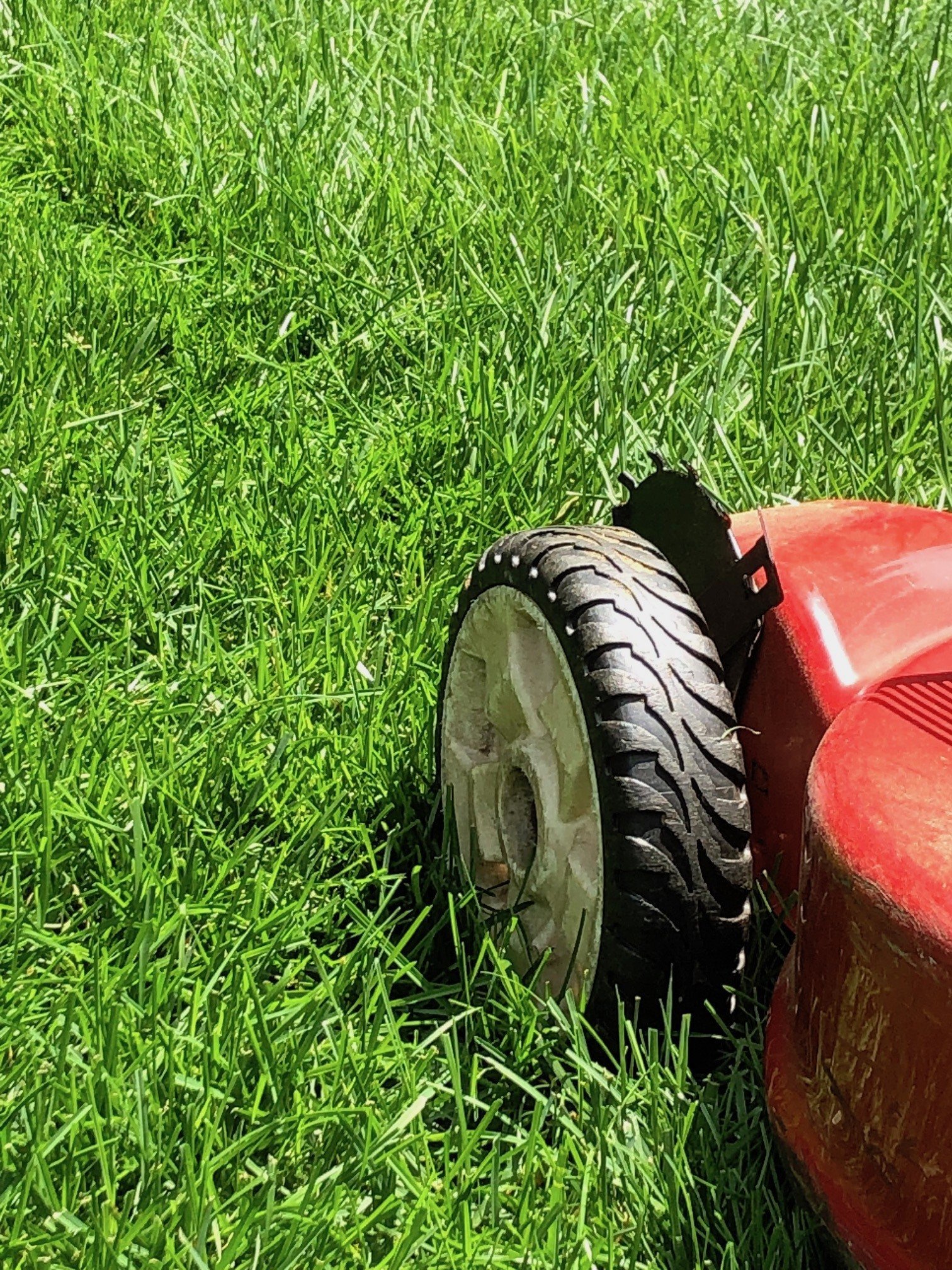Whether you search through lawn forums or YouTube videos, one comment, post, or mention that is sure to pop up is the 1/3 grass cutting rule for lawns. It’s a simple principle where you are mowing the grass at the right height and proper frequency.
This basic turf management rule applies to golf courses and home lawns. Keeping your grass properly cut is an important lawn care step and can help keep it healthy, less stressed, promote lush growth, and have a greener and thicker turf.
What is the 1/3 Lawn Mowing Rule?
The one-third rule means never cut more than 1/3 of the grass blade at a time in a single mowing. For example, if you keep Turf Type Tall Fescue grass at 4′”, cut the grass before it exceeds 6″ (1/3 of 6 is 2 – cut 2″ or less each mowing). Another example is if you keep a low 2″ cut on Kentucky Bluegrass, cut the grass when it’s no longer than 3″ (1/3 of 3 is 1 – cut 1″ or less each lawn mowing).
Cutting too much of the leaf tissue off at one time can cause excessive stress on the plant. This can be harmful particularly under already stressful lawn conditions such as summer heat, drought, fungus and disease, and insect damage.
When the 1/3 rule is broken, the plant will stress and the lawn will take on a slight gray hue, losing much of the dark green color it once had.
If your lawn is overgrown, there are some things you can do to help limit the stress of the plant and light hazy appearance:
- Set your mower on the highest setting height, mow your lawn, and bag your clippings
- Mow the lawn in the opposite direction at the next lowest setting, and mulch your clippings
- Spoon feed some fertilizer (like Carbon Phix) after you mow to help promote new growth (about 1/4 lbs. Nitrogen per 1,000)
- Incorporate micronutrients into your lawn care program (and after you mow) including amino acids, fulvic acid, sea kelp, and iron with products such as Green Lawn & Turf
- Plan to mow and feed the day before the rain, or irrigate with some water immediately after
Lawn Mowing Best Practices (Tips)
- Mow your lawn frequently – this promotes healthy growing and a lush lawn
- Cuts smaller pieces of grass and promotes proper mulching
- Adjust mower height – cut your grass taller in the warmer summer months
- Begin to raise mowing height towards the end of spring
- Clean the mower blade and mower deck of grass clippings – this can prevent any disease or fungus from spreading from the mower onto healthy leaf tissue
- Always use a sharp, clean, and balanced mower blade
- If using a lawn roller or striping kit on your mower, adjust your pattern every 2-3 mowing
Hope this was helpful and helped answer “what is the lawn one-third rule?” Proper lawn mowing height may be the single most important factor to your overall lawn care program, and can help answer how often should you mow the lawn. Follow these simple lawn mowing tips, avoid breaking the 1/3 rule, and you’ll be off to a great start!
What is the 1/3 rule?
The one-third rule means to never mow more than 1/3 of the grass blade at a time in a single mowing. For example, if you keep Turf Type Tall Fescue at 4 inches, mow the grass before it exceeds 6 inches. Similar example if you keep a low 2 inch cut on Kentucky Bluegrass, cut the grass when it’s no longer than 3 inches. Maintaining a proper mowing height is an important rule in your lawn care program.
What height should grass be cut in the summer?
For cool-season lawns, it’s best to mow higher in the hot summer months. Rule of thumb, use the second-highest setting on your lawnmower. Mow at 3 – 3.5 inches in the summer for lower cut grasses like Kentucky Bluegrass (KBG), and up to 4 – 4.5 inches for grasses like Turf Type Tall Fescue (TTTF). Longer grass will help shade the ground, keeping the soil cooler. It will also help reduce heat and drought stress. Begin to gradually raise the mowing height towards the end of spring.
What is the best length for grass?
Depending on the type of grass you have on your lawn. Kentucky Bluegrass (KBG) and Perennial Ryegrass (PRG) can be cut short, around 2.5 inches. Some cultivars can even be “trained” to be cut very short using a reel mower (1″ and under). While other grasses such as Tall fescue (TTTF) prefer to be mowed higher, around 3.5 – 4 inches.
Should I leave grass clipping on my lawn?
When properly mowed mulched, grass clippings can be beneficial to lawns as they act as a natural fertilizer. Returning the nutrients from the mulched grass blades back into the lawn can decompose at the thatch layer and feed the soil and turf. However, if grass clippings are cut too long, breaking the 1/3 rule, then the longer grass clippings can do more harm than good and is best to use a bagger.

